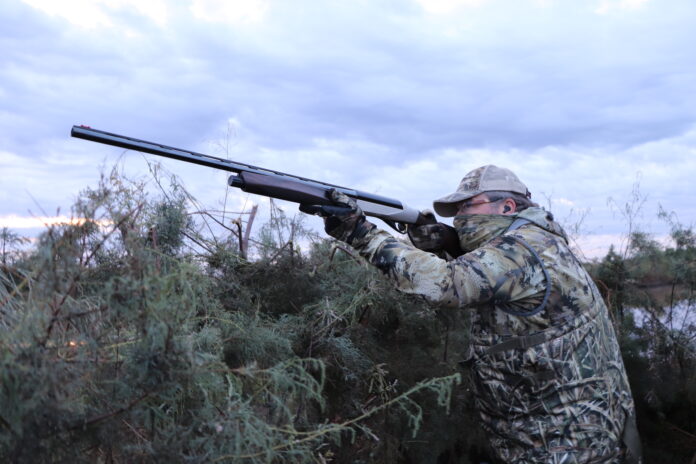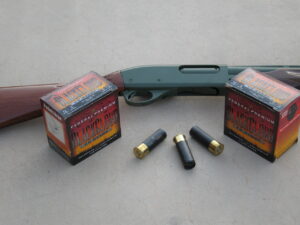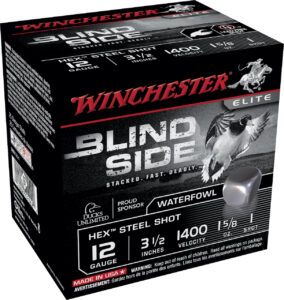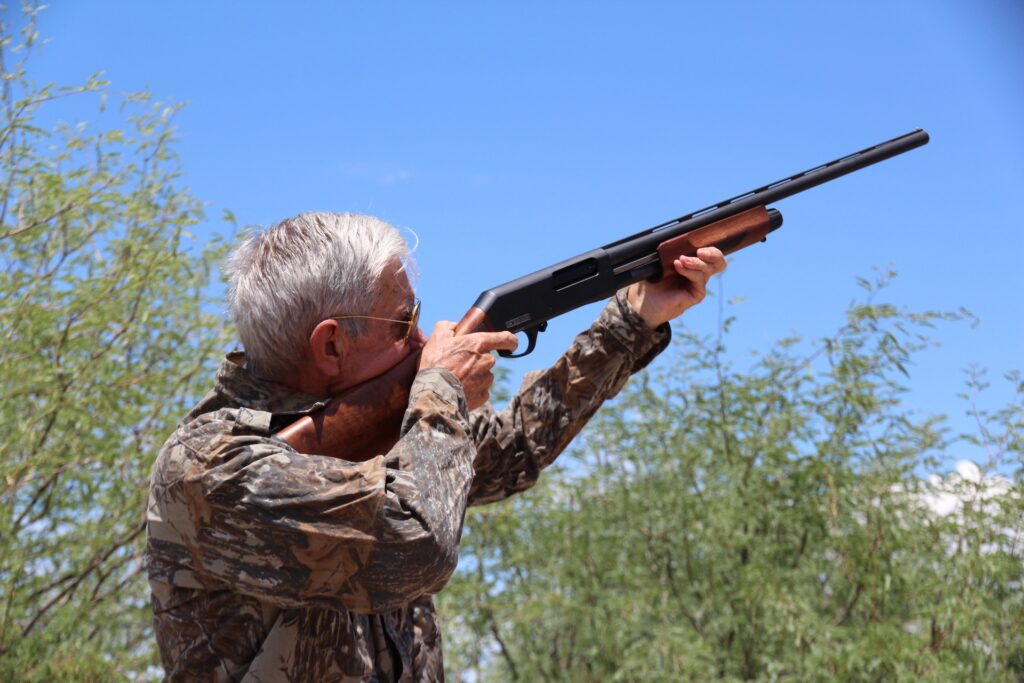
BY STEVE COMUS
The good news is that ammunition is more readily available for this year’s waterfowling seasons than it has been in recent times, due to the pandemic and supply line issues. The bad news is that it is more expensive – as is about everything else during these inflationary times.
Gun prices, although they continue to creep up a bit, are not seeing prices rise as much as inflation, so for the short term, that’s a plus. However, it also is good news that gunmakers are delivering more value – bang for the buck – now, compared to past times.
On the waterfowl front, one of the most significant things manufacturers have been able to do in recent years is to deliver shotguns that are as close to being impervious to the environment as possible.
Both high-tech materials and finishes for waterfowling guns are now at a point where water, and even saltwater, have either no, or little effect. It hasn’t always been that way. Back when wood and blued steel were what waterfowling guns were made of, moisture would ruin the finish on the wood, and it was almost like the hunter could sit there in the blind and watch the metal parts of the gun rust right in front of his eyes.

It is not that modern waterfowling guns do not need regular cleaning and maintenance, because they do. It is just that now, it is easier and quicker to do it, and there is less chance of permanent damage, due to the environmental elements.
With that in mind, what constitutes a “proper” waterfowling gun these days? First, it has to be able to digest non-toxic ammunition because unleaded ammo is mandated by law for waterfowling (and other kinds of hunting in various locations around the state, nation and world).
Interchangeable chokes are pretty much considered mandatory, and if not required, certainly convenient. With the really hard shot, like steel and tungsten, a modified choke is about as tight of a restriction as can be recommended generally. Improved cylinder often is the level of restriction that works best.
To determine what is best for an individual shotgun, merely go to the patterning board and see what kind of pattern a particular choke delivers when using a particular load.

FEDERAL’S BLACK CLOUD steel shot works well on waterfowl hunts. Here, the ammo is shown with a Remington 870 pump shotgun – good combination.
The idea is to have a dense enough pattern at distance so that any bird flying within that pattern will be hit and brought down. Hence, it is best to figure out what the maximum distance shots will be taken at, and then see what the pattern looks like at that distance. It doesn’t take many shots to figure out the right choke/ammo combination.
For those who opt to use bismuth shot, proper choking is the same as it was for lead. This means improved cylinder or modified for birds close in and over the decoys, or full for passing shots. Overall, modified choke is good for both bismuth and lead shot.
Barrel length is not particularly important from the performance perspective, except that it has to be at least legal (18 inches or longer). However, there are considerations in waterfowling blinds that can make longer barrels preferable.
Hunters tend to be right next to each other in waterfowl blinds, so muzzle blast can be a factor. Also, since shotguns often are leaned against the corner of the blind, the barrel needs to a length that doesn’t hang-up on its surroundings and that can be steadied easily. This can change from blind to blind, but overall, a barrel at least 28 inches long makes the most sense.
The gauge of a proper waterfowling shotgun is beginning to change, as is the gauge of guns considered to be turkey hunting shotguns. This has to do with advances on the ammo front.
For example, it wasn’t that long ago that folks considered a proper turkey hunting shotgun to be a 10-gauge, shooting 3½-inch rhino-roller ammo. Now, with TSS shot, the .410 bore can bag gobblers at distances relegated to the 10-gauge just a few decades ago.
Also in recent years, there has been progress with the 3-inch 28-gauge. It probably will not be a common sight in waterfowling for a while, but it is destined to become a factor downstream because it puts enough punch in a gun that is significantly smaller and lighter than a 20-gauge to make it a viable choice.
Meanwhile, most waterfowling shotguns are either 12 or 20-gauge, usually chambered for 3-inch shells (some are chambered for 3½-inch shells). Because they are easier to disassemble, clean and reassemble, pump and semi-auto shotguns are the most commonly used designs for waterfowling. They also are less expensive than many over/unders or side-by-sides.

Most gunmakers offer waterfowling shotguns with various camouflage finishes. They also offer Plain Jane, basic non-reflective black finishes on their pumps and semi-autos. There is usually a premium price for the camo-finished guns. Yet, from a performance perspective, the non-reflective black works just as well. To a large degree, the camo finish is more of a fashion statement than a performance matter.
Pump shotguns tend to be less expensive than their semi-auto counterparts. Both designs perform similarly, except that one requires a little elbow grease, which can be a plus when wet guns tend to ice-up in the late season cold.
There are basically three general price categories when it comes to pumps and semi-autos.
For example, on the semi-auto front, really serious, hardcore waterfowlers, especially those who hunt internationally like hunting buddy Ramsey Russell, often opt for the Benelli Super Black Eagle, which is comparatively pricey, but delivers the goods and holds up to heavy use over time. And Benelli’s Ethos is a really handy semi-auto, especially for those who hunt both upland game and waterfowl with the same gun.
In the midrange of price, semi-auto models like the Mossberg 940 Pro Waterfowl or Savage Renegauge make a lot of sense. And for those on a tight budget, pumps come to the fore. The Mossberg 500 or the Dickinson Commando pump guns are worth a close look. And there is the Remington 870, which has returned to the market in recent times.
When it comes to ammunition, most non-toxic 20-gauge ammo has shot payloads ranging from 7/8-ounce to 1 ounce, with a few offerings going to 1 1/8-ounce. No. 3 and No. 4 nontoxic shot is common and works. But for shots over decoys, No. 7 or No. 6 can work great.
For 12-gauge loads, No. 3, 4, 5 or 6 can work well for duck hunting, depending on the distance of the shot. For geese, depending on local conditions and shot distances, larger shot may be indicated. For example, goose loads can feature shot as large as T, TT or F. Such shot assumes the use of long shells and here is where the 3½-inch 12-gauge comes into play.
Regardless of what gun or ammo is being used, success requires that the hunter be able to hit the bird with enough pellets to bring the bird down. No equipment can compensate fully for lack of marksmanship skill.
This means that pre-season practice is important. Shoot clay targets and, literally, get into the swing of things. Then, when it is time to down a duck or goose, success will happen.
Shoot well. Shoot often and stay safe. Bang, bang.




